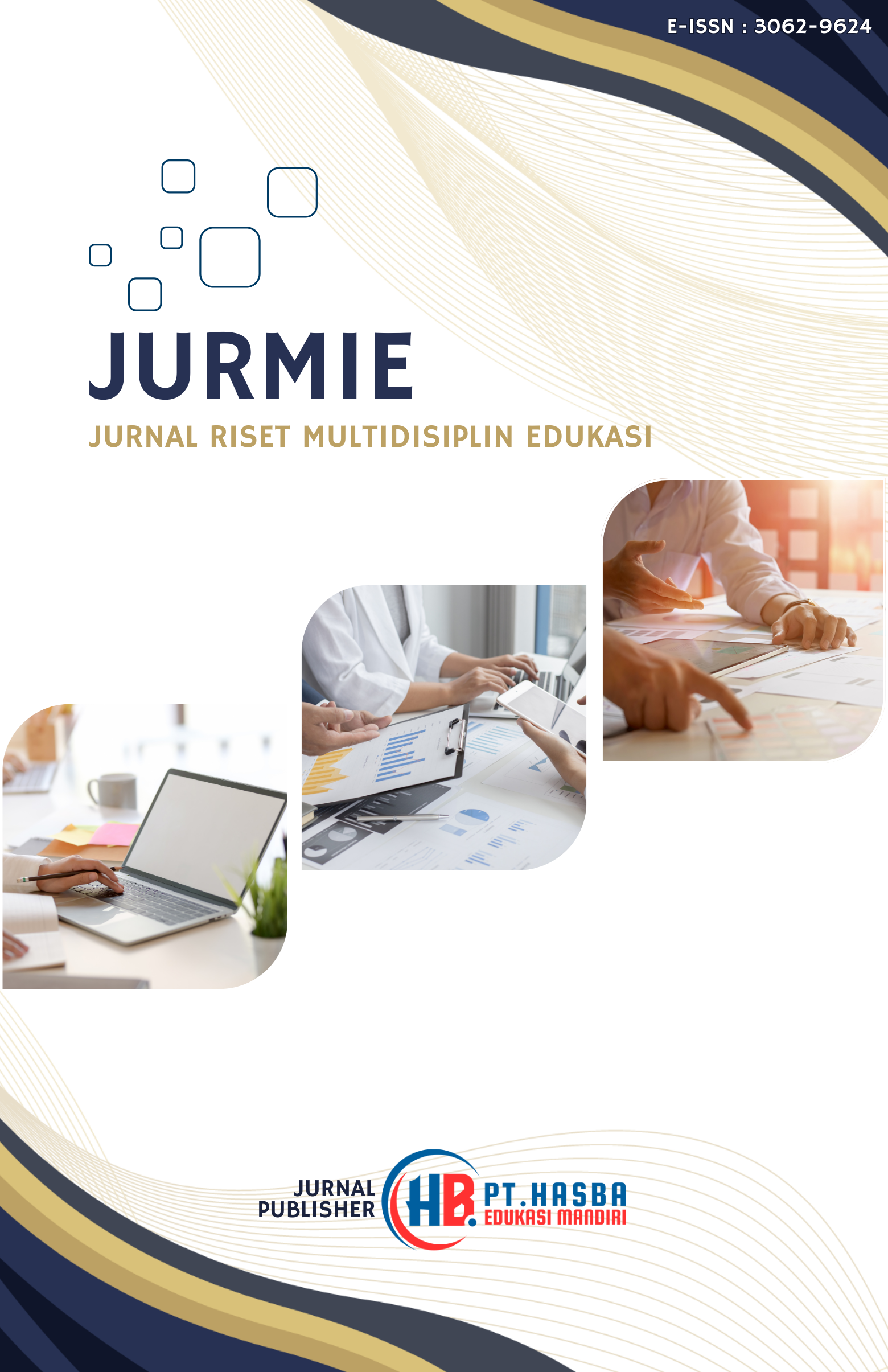Perancangan Dan Pembuatan Cetakan Ornamen Teralis Dari Aluminium
DOI:
https://doi.org/10.71282/jurmie.v2i3.193Keywords:
Trellis Ornament Molds, Finite Elements Analysis (FEA), AluminiumAbstract
The metal casting process is the process of pouring molten metal produced from melting into a mold at the melting temperature of the metal. Aluminum casting is generally done by the Sand Casting method, using a sand mold. Aluminum itself is a metal that is often used for various purposes, ranging from household appliances, construction, to automotive components and various other applications. This study focuses on the design and manufacture of aluminum trellis ornament molds, which are intended to improve production efficiency and the quality of the final product. The data processing method used in this study is the FEA (Finite Element Analysis) method. From the results of the analysis carried out through the FEA (Finite Element Analysis) analysis method that has been applied, it can be concluded that the stress distribution in the trellis ornament mold increases significantly with an increase in load from 50kg to 150kg. The results of the study also show that the mold is able to withstand loads of up to 150kg with tension and exceeding that which is within the safe limit. From the results of this study, it is recommended to make recommendations for improvements including the use of alternative materials with higher strength, redesigning the geometry of the mold to reduce stress concentration, and optimizing the process. Therefore, the results of this research are expected to be used in the future as a reference or literature to increase insight into the development of stronger and more efficient aluminum trellis ornament molds.
Downloads
References
S. Lubis and I. Siregar, “Proses Pengecoran Aluminium Sebagai Bahan Pembuatan Blok Silinder,” J. MESIL (Mesin Elektro Sipil), vol. 1, no. 1, pp. 30–37, 2020, doi: 10.53695/jm.v1i1.14.
T. D. Saptaryani and B. Santoso, “Analisis Porositas Hasil Pengecoran Pada Pembuatan Material Standar ALSi12 ( B ) dari Material Paduan Aluminium Bekas Terhadap Komposisi Kimia dan Cacat Porositas,” vol. 2, pp. 61–71, 2024.
I. Nafiuddin and Samsudi, “Pengaruh Variasi Putaran Cetakan Pengecoran Sentrifugal Tegak pada Pengecoran Paduan Aluminium terhadap Ketangguhan Impak dan Struktur Mikro Pembuatan Velg Gokart,” J. Mech. Eng. Learn., vol. 9, no. 1, pp. 1–7, 2020, [Online]. Available: https://journal.unnes.ac.id/sju/index.php/jmel/article/view/40441
R. Siswanto and R. Rais, “ANALISIS POROSITAS DAN KEKERASAN PADUAN Al-12,6%Si DENGAN VARIASI WAKTU TUNGGU DALAM CETAKAN DAN MEDIA PENDINGIN MENGGUNAKAN CETAKAN PASIR BASAH,” Pros. Semin. Nas. Lingkung. Lahan Basah, vol. 3, no. April, pp. 394–398, 2018.
S. Arjunanda, Z. Abadi, Jasman, and N. Hendri, “Pengaruh Temperatur Tuang Pada Pengecoran Daur Ulang Aluminium Terhadap Nilai Kekerasan the Effect of Pouring Temperature on Hardness Value of Recycled Aluminum,” Vomek, vol. 4, no. 3, pp. 73–77, 2022, [Online]. Available: http://vomek.ppj.unp.ac.id
M. T. Wijaya, Z. -, and W. -, “Pengaruh Variasi Temperatur Tuang Terhadap Ketangguhan Impak Dan Struktur Mikro Pada Pengecoran Aluminium,” Simetris J. Tek. Mesin, Elektro dan Ilmu Komput., vol. 8, no. 1, pp. 219–224, 2017, doi: 10.24176/simet.v8i1.933.
A. Indarsari, A. Z. Syahrial, and B. W. Utomo, “Characteristics of aluminium ADC 12/SiC composite with the addition of TiB and Sr modifier,” E3S Web Conf., vol. 130, pp. 1–10, 2019, doi: 10.1051/e3sconf/201913001004.
H. F. Susilo, Eco GREEN 2024 Menuju Kolaborasi Harmonis yang Berkelanjutan ( Fostering Collaboration for Sustainable Impact ).
D. A. W, R. Hanifi, and I. Dirja, “Analisa Pengaruh Variasi Tipe Media Pendinginan Pada Pengecoran Piston Terhadap Kekerasan Dan Struktur Mikro,” J. Kaji. Tek. Mesin, vol. 8, no. 2, pp. 201–210, 2023, doi: 10.52447/jktm.v8i2.7107.
A. P. Ayu and E. D. Jannati, “Metode LFC ( Lost Foam Casting) pada Proses Pembuatan Dies Roll Pipa 12 In,” Semin. Teknol. Majalengka, no. 103, pp. 119–123, 2021.
D. A. Prakoso, “Studi Pengecoran Aluminium Dengan Metode Gravity Die Casting Dan Gravity Investment Casting Terhadap Density, Porositas, Struktur Mikro Dan Kekerasan,” Institutional Repos. Univ. Muhammadiyah Surakarta, pp. 1–10, 2021.
Direktorat Pembinaan Sekolah Menengah Kejuruan, “Teknik Pengecoran Logam & Perlakuan Panas,” pp. 4–196, 2019.
K. Pphi, D. A. N. Serat, A. E. Latief, N. D. Anggraeni, and I. Putera, “Alfan Ekajati Latief, Nuha Desi Anggraeni, and Ichsan Putera,” Peranc. Cetakan Inject. Molding Handpress Mater. Komposit Pphi Dan Serat Alam, vol. Vol. 8No., no. Jurnal Teknik Mesin, pp. 2502–2040, 2022.
Lestari Irma, “Analisis Produktivitas Batching Plant Menggunakan Metode Time Study,” pp. 1–80, 2021.
M. A. Shidiq and M. F. Sidiq, Dasar Metalurgi. 2022.
W. Andriani, “Penggunaan Metode Sistematik Literatur Review dalam Penelitian Ilmu Sosiologi,” J. PTK dan Pendidik., vol. 7, no. 2, 2022, doi: 10.18592/ptk.v7i2.5632.
S. Silmi, “Metoda Penelitian,” Bab III Metod. Penelit., vol. Bab iii me, pp. 1–9, 2017.
I. Dumyati and S. Nurhaji, “Modeling dan Simulasi Finite Element Analysis pada Segitiga T Sepeda Motor Menggunakan Sofware Ansys 2023,” Quantum Tek. J. Tek. Mesin Terap., vol. 5, no. 1, pp. 26–30, 2023, doi: 10.18196/jqt.v5i1.19012.
Downloads
Published
Issue
Section
License
Copyright (c) 2025 Muhammad Arkan, Sailon, Syamsul Rizal (Author)

This work is licensed under a Creative Commons Attribution-ShareAlike 4.0 International License.













